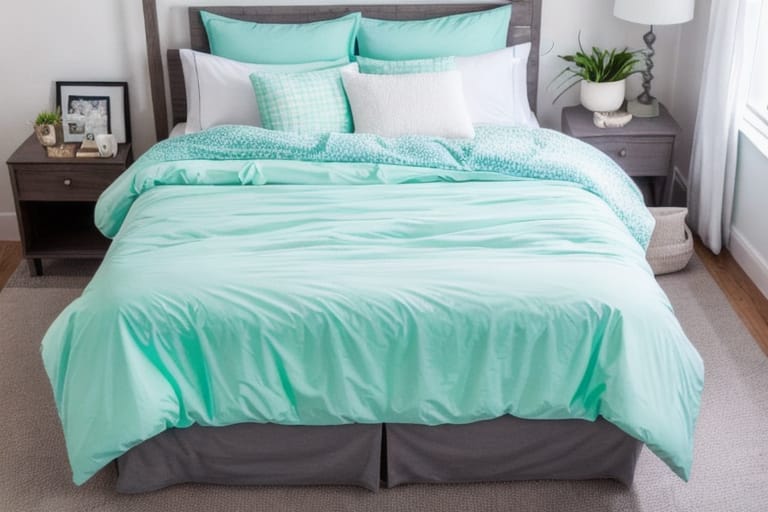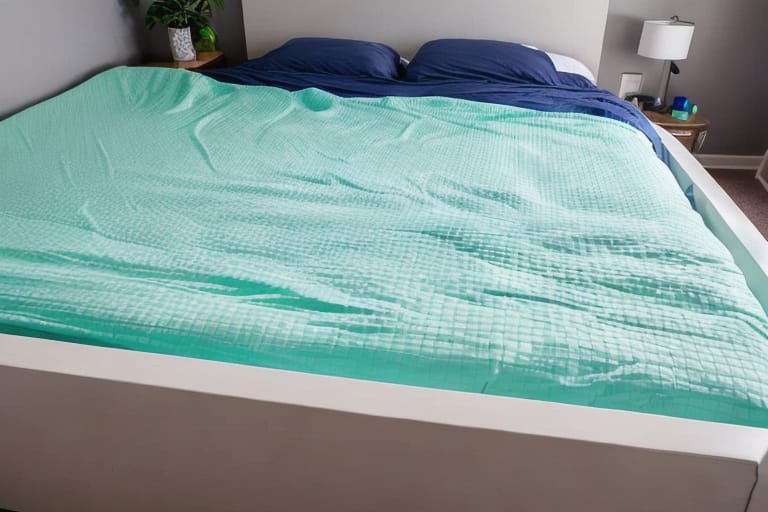Down comforters are prized for their lightweight warmth and plush feel. But if you have asthma, you may wonder whether sleeping under one could trigger breathing issues. This comprehensive guide examines the debate around down bedding and asthma. We’ll cover the pros and cons, scientific research, bedding alternatives, and tips for creating an asthma-friendly sleep environment.
What is a Down Comforter?
A down comforter is filled with the fine, fluffy underpainage from ducks or geese. This natural down insulation traps body heat, creating a comfortably warm sleep space without heavy fabrics. Down offers an unmatched level of softness and breathability. Its air pockets gently conform to your body’s contours.
With proper care, a quality down comforter can last over 10 years. While expensive initially, down bedding offers durability to justify the investment.
How Could Down Trigger Asthma?
For those with asthma or allergies, certain triggers can set off breathing issues:
- Allergies to Down: Some people have allergic reactions to Down itself. This can cause asthmatic symptoms like coughing and wheezing.
- Dust mites: The warm, humid environment inside down comforters is ideal for dust mites to accumulate. Exposure to dust mites is a common asthma trigger.
- Difficult cleaning: Down bedding can be challenging to wash and dry thoroughly at home. Lingering moisture and allergens may lead to irritation.
However, avoiding asthma triggers largely depends on your unique sensitivities. While one person may react to down bedding, another may sleep soundly without issue.
What Does the Research Say?
Scientific studies explore connections between bedding materials and asthma symptoms:
- A 2015 randomized controlled trial studied asthma patients using down pillows and duvets vs. synthetic bedding. After 12 months, there was no statistically significant difference in asthma symptoms between the two test groups.
- A 1998 study found children with house dust mite allergy can safely use down bedding if it remains adequately cleaned and dry.
- One respiratory journal cautions down bedding may worsen asthma if an allergy or intolerance to Down itself exists. Washing at high temperatures minimizes risks.
So while down comforters aren’t definitively proven to exacerbate asthma, they do require maintenance to prevent the buildup of asthma triggers over time.

Alternatives to Down Comforters
If you decide to avoid down, several synthetic alternatives offer warmth without allergens:
- Cotton: Natural cotton fill provides breathability. Look for longer-staple cotton that’s more durable.
- Polyester: Polyester fill offers affordability and easy care. Newer manufacturing techniques mimic the billowy support of down.
- Wool: The natural lanolin in wool resists dust mites. Merino wool balances insulation with moisture-wicking.
- Silk: Silk-filled comforters feel incredibly soft and regulate temperature well. Like wool, silk deters dust mites.
Tips for Asthma-Friendly Bedding
While no material is definitively “bad” for asthma, take precautions to minimize allergens:
- Encase comforters in duvet cover to create a protective barrier.
- Wash bedding weekly in hot water to kill dust mites. Add vinegar or eucalyptus oil for extra disinfecting power.
- Dry clean down comforters 2-3 times per year to remove accumulated dust and dander.
- Freeze down comforters overnight every few months—the cold kills dust mites.
- Use mattress and pillow encasements to seal out allergens.
Your doctor may also recommend allergy-proof bedding covers, air purifiers, and dehumidifiers to make bedrooms asthma-safe zones.
Should You Keep Using Down?
Rather than definitively claiming down comforters are bad for asthma, research suggests personalized decisions based on your distinct sensitivities.
Down offers exceptional benefits in warmth, softness, and longevity if you can keep it clean and allergen-free. Encasing and frequent washing largely reduce risks.
For more severe asthma and dust mite allergies, synthetic down alternatives eliminate concerns over triggering attacks. New microfiber fills nearly replicate the benefits of natural goose down for a fraction of the cost.
Discuss using down bedding with your allergist. Together, you can weigh options for managing your unique asthma attack triggers. While adjusting bedding takes trial and error, creating a sleep sanctuary free of asthma disturbances is possible.
Takeaways: Are Down Comforters Bad for Asthma?
- Down comforters could trigger asthma attacks if you have allergies to down itself or dust mites that accumulate in down over time.
- However, research does not show definitively that down bedding worsens asthma vs. synthetics. Personal sensitivities vary.
- To minimize risks, encase down comforters, wash frequently, and freeze overnight every few months.
- For more severe asthma, hypoallergenic down alternative comforters eliminate concerns over attacks.
- Speak to your doctor to decide if using down is appropriate based on your unique condition.
With attention to asthma triggers, the creation of an allergen-free sleep space, and guidance from your allergist, you can make informed, personalized choices about using down bedding. While adjustments take time, you can curate bedding for both comfort and healthy, restful sleep.

Frequently Asked Questions
What’s the difference between a down comforter and other bedding materials?
A down comforter is filled specifically with the underplumage from ducks or geese. This fine, fluffy down insulation creates lightweight warmth by trapping body heat. Other comforters may use synthetic fills like polyester or natural materials like wool or cotton. Down offers exceptional softness, breathability, and moldability not found in most alternatives.
Can you wash a down comforter at home?
You can wash lightweight down comforters at home but it takes special care. Use a large capacity machine, mild detergent, and multiple rinse cycles. Tumble dry with wool dryer balls on low. Improper drying can damage down clusters. However, home washing won’t sanitize as thoroughly as professional dry cleaning.
How often should you clean a down comforter?
To limit dust mites, dander, and other asthma triggers, wash cotton or synthetic comforters weekly. Professionally dry clean down comforters 2-3 times per year, or every month or two if you have allergies. This removes accumulated allergens missed by home washing.
What’s the best down alternative for asthma sufferers?
The most hypoallergenic down alternatives are synthetic microfiber fills, especially quality microfiber made from finer denier polyester or PrimaLoft fibers. These mimic the lightweight feel of down, while synthetic materials deter dust mites and allergens. Cotton, wool, and silk also resist dust mites well.
Can you put a down comforter in a duvet cover?
Yes, you can and should place any comforter inside a tightly woven, preferably cotton duvet cover. Duvet covers act as a protective barrier keeping comforters clean for longer and preventing loose feathers or down from escaping through the stitches. Choose a cover at least 2 inches larger than your comforter on all sides.
How do you make a bedroom asthma-friendly?
Use mattress and pillow protectors to seal out dust mite allergens. Wash sheets weekly in hot water. Freeze or dry clean comforters often. Keep humidity low and open windows to circulate fresh air. Consider a dehumidifier, air purifier with HEPA filter, allergy-proof covers, and minimal carpeting. Removing clutter also eliminates places for dust to accumulate.








